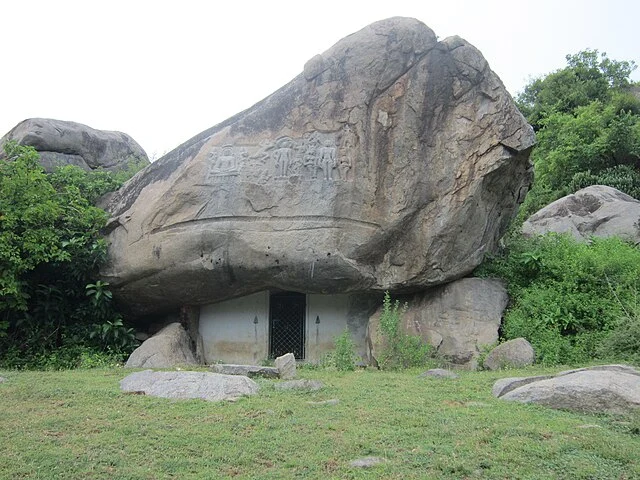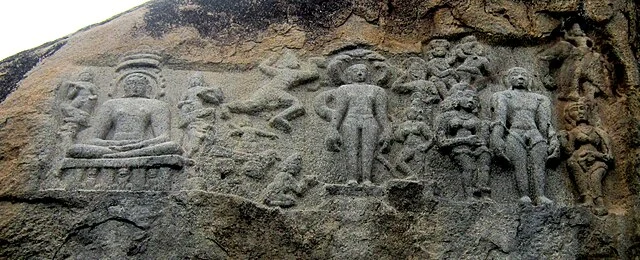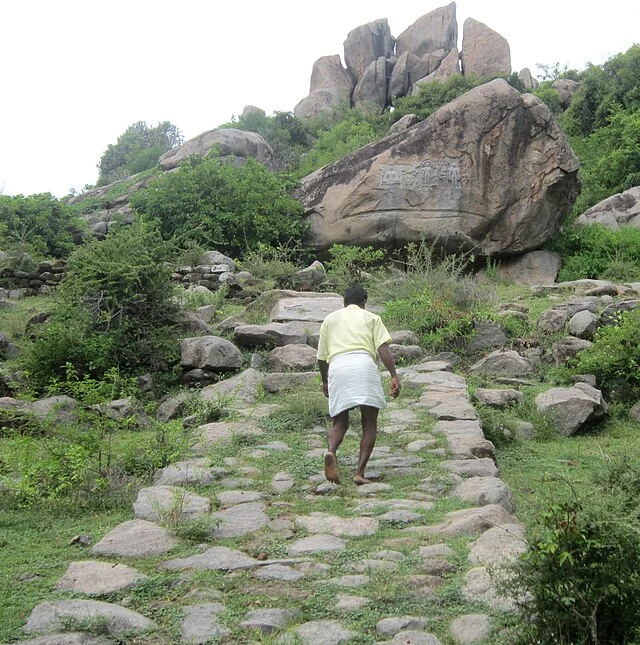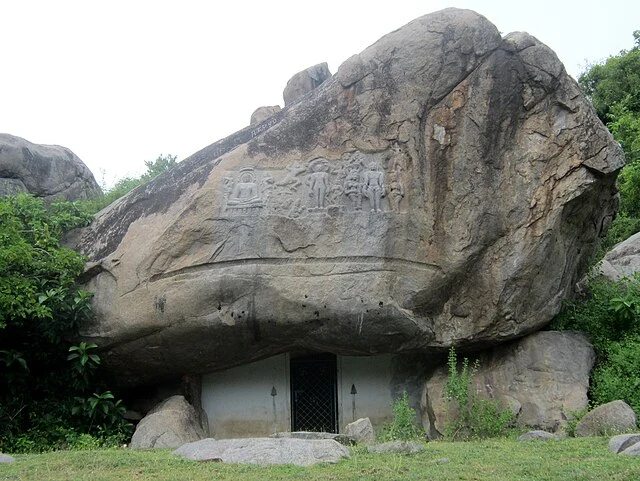The Seeyamangalam rock-cut Jain temple, also known as a Jain cave temple, is located in the village of Seeyamangalam, Tamil Nadu, India. This temple is significant for its historical, religious, and architectural value. It provides insight into the early history of Jainism in South India.
Get your dose of History via Email
Historical Background

The Seeyamangalam rock-cut Jain temple dates back to the 7th century AD, during the reign of the Pallava dynasty. The Pallavas were influential rulers in South India from the 3rd to the 9th centuries AD. They were known for their patronage of various religions, including Jainism. The temple at Seeyamangalam is a testament to their support for the Jain community.
The temple was built during the time of Mahendravarman I, who ruled from approximately 600 to 630 AD. Mahendravarman I is well-known for his contributions to rock-cut architecture. While he initially supported Jainism, he later converted to Shaivism. Despite his conversion, he continued to support the construction of Jain monuments, including the Seeyamangalam temple.
Architectural Features

The Seeyamangalam rock-cut Jain temple is carved out of a large granite hill. The temple’s architecture reflects the early stages of Dravidian rock-cut temple design, which later evolved into more elaborate structures during the Pallava period.
The entrance of the temple features a simple yet impressive facade with two square pillars. These pillars support a rock-cut verandah that leads to the main shrine. The main shrine, also known as the garbhagriha, houses a bas-relief of the Tirthankara Mahavira, the 24th and last Tirthankara of Jainism.
The image of Mahavira is depicted in the dhyana mudra, a meditative posture. The carving is simple but effective, reflecting the minimalist approach common in early Jain art. The temple’s walls are devoid of elaborate decorations, focusing instead on the central figure of Mahavira.
Inscriptions

An important aspect of the Seeyamangalam temple is the inscription found within. The inscription, written in ancient Tamil script, refers to the temple as a “Jinalaya,” which means a Jain temple. It mentions the name of a Jain monk, Gunasagara, who was likely involved in the temple’s establishment or upkeep.
The inscription provides valuable information about the temple’s history and the Jain community in the region. It also highlights the patronage extended by the Pallava rulers to Jainism during this period.
Religious Significance
The Seeyamangalam rock-cut Jain temple is one of the oldest Jain temples in Tamil Nadu. It marks the spread of Jainism in the region during the early medieval period. Jainism had a significant following in Tamil Nadu during the Pallava period, and temples like Seeyamangalam served as important religious centers for the Jain community.
The temple’s dedication to Mahavira underscores the importance of this Tirthankara in Jain worship. The focus on a single Tirthankara reflects the early Jain practice of emphasizing meditation and self-discipline, key aspects of Mahavira’s teachings.
Preservation and Legacy

Today, the Seeyamangalam rock-cut Jain temple is a protected monument under the care of the Archaeological Survey of India (ASI). The temple’s historical and architectural significance has been recognized, and efforts have been made to preserve its structure and the valuable inscriptions it contains.
The Seeyamangalam temple remains an important site for both historians and religious scholars. It offers a glimpse into the early history of Jainism in Tamil Nadu and the architectural style of the Pallava period. The temple is a reminder of the religious diversity that existed in South India during the early medieval period and the role of Jainism in the region’s cultural landscape.
Conclusion
The Seeyamangalam rock-cut Jain temple is a crucial piece of Tamil Nadu’s religious and architectural history. Built during the 7th century AD, it reflects the early development of rock-cut temple architecture under the Pallavas. The temple’s simple yet profound design, combined with its historical inscriptions, offers valuable insights into the spread of Jainism in South India. Preservation efforts by the ASI ensure that this important monument continues to educate and inspire future generations.
Source:

